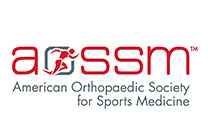
Feeling a sharp, sudden pain in your hip during a workout can be a real concern, especially in the hustle and bustle of New York City's active lifestyle. Hip flexor strains, often affecting athletes and fitness buffs, can slow you down if not handled properly. Here's how you can prevent and recover from this common injury, keeping you moving and thriving in the city that never stops.
Understanding Hip Flexor Strains
Hip flexor strains occur when the muscles or tendons in the front of the hip are overstretched or torn. These muscles are crucial for lifting your knees and moving your legs forward, making them susceptible to injury during activities involving sudden movements or intense exertion.
Prevention Tips
Warm Up Properly: Ensure you perform a thorough warm-up before engaging in physical activity. Dynamic stretches and light cardio can prepare your muscles for more strenuous exercise.
Strengthen Your Core and Hips: Incorporate exercises that strengthen your core and hip flexors. Planks and hip bridges can help build the necessary muscle strength and stability.
Improve Flexibility: Regular stretching, especially of the hip flexors and surrounding muscles, can enhance flexibility and reduce the risk of strains. Yoga and targeted stretching routines are beneficial.
Avoid Overtraining: Gradually increase the intensity and duration of your workouts. Overtraining without proper rest can strain your muscles and increase injury risk.
Recovery Strategies
Rest and Ice: Immediately after a strain, rest the affected area and apply ice to reduce swelling and pain. Avoid activities that exacerbate the pain.
Physical Therapy: For severe strains, consult a physical therapist. They can provide tailored exercises and techniques to aid recovery and prevent future injuries.
Gradual Return to Activity: Resume activities slowly, ensuring you don’t push through pain. Listen to your body and allow adequate time for healing.
By following these prevention and recovery strategies, you can reduce the likelihood of hip flexor strains and return to your activities stronger and more resilient.
If you're dealing with a hip flexor strain or want personalized advice on preventing hip and groin injuries, consider consulting with Dr. Srino Bharam. A Hip and Groin Injury Specialist can provide expert guidance, tailored treatment plans, and support to help you recover effectively and stay active.
AUTHOR: Srino Bharam MD, MBA is a board certified, fellowship-trained sports medicine orthopedic surgeon and professor of orthopedic surgery specializing in the treatment of athletic injuries of the hip and groin. Dr. Bharam has over 20 years of experience in treating injuries and conditions of the hip to restore athletes and patients to an active lifestyle.












